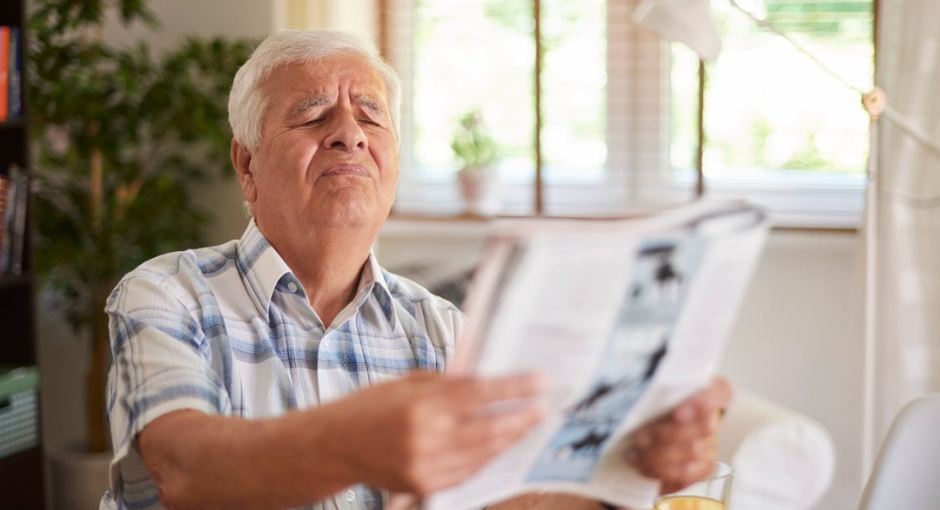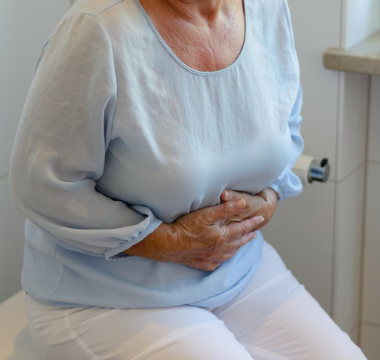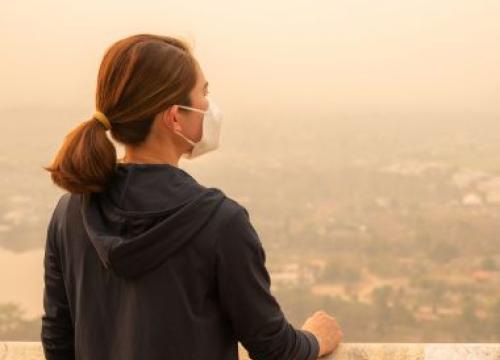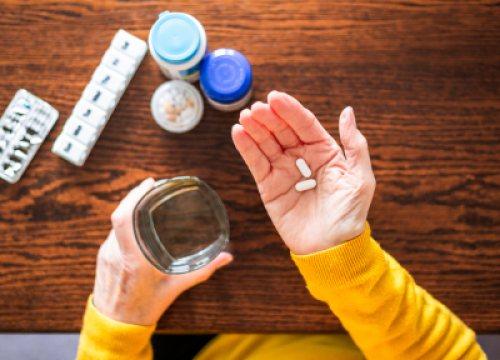Non-motor Symptoms: What's New? Part 2

Parkinson’s disease (PD) is largely known for its motor symptoms, slow movement, tremor and stiffness, but other wide-ranging challenges, known as non-motor or non-movement symptoms — can often be most problematic. Treating these non-motor symptoms promotes optimal living.
The following article is part two of a series based on a Parkinson’s Foundation Expert Briefings webinar exploring the latest research and treatments in PD-related non-motor symptoms, by Ronald Pfeiffer, MD, Oregon Health and Sciences University, a Parkinson’s Foundation Center of Excellence. Read part one next.

Gastrointestinal Functions
Gastroparesis is a condition that prevents the stomach from emptying properly. For many with PD, spontaneous stomach muscle movement is impaired, preventing food from easily emptying. This creates a feeling of fullness after a few bites of food, causing reduced appetite. Symptoms include nausea, vomiting, heartburn, bloating and weight loss. Diet and medications, including BOTOX® injections to the pyloric sphincter (a muscle that helps the movement of partially digested food and liquids) are among treatment options. Dopaminergic medication delivery systems may also avoid gastroparesis.
Small Intestinal Bacterial Overgrowth (SIBO): While this recurrent non-motor gastrointestinal issue has not been well-researched in Parkinson’s, one study showed that up to 54 percent of people with PD experience it. Decreased gut motility, which is common with PD, can lead to SIBO, characterized by:
- Increased bacterial density in the small intestine
- Presence of colonic-type bacterial species in the small intestine
SIBO can result in malabsorption (condition that makes it difficult to digest and absorb nutrients from food) and might explain weight loss in PD. When experiencing SIBO, levodopa and medications may take longer to work, wear off more quickly or not work at all, because they must travel to, and through, the stomach to be effective. Antibiotics may help.
Constipation: This can be chronic in PD. It can be caused by physical changes due to the disease and/or PD medications. Increasing dietary fiber, through food and supplements, increasing fluids and exercise, and minimizing starchy foods can all be beneficial. More than 60 percent of people with PD experience increased straining, pain and incomplete evacuation of their bowels. Dopaminergic medications, including apomorphine injects, BOTOX® injections or biofeedback techniques may offer relief.
Cardiovascular Functions
Orthostatic hypotension: More than half of people living with PD experience a significant blood pressure drop upon standing; certain medications can worsen this. This drop can cause lightheadedness or fainting, fuzzy vision, foggy thinking, headache, lower back ache, lethargy or fatigue. Increase blood pressure or reduce lightheadedness by:
- Drinking 12-16 ounces of cold water before standing
- Crossing legs or flexing calf muscles can
- Eating small, frequent meals and increasing fluids and salt
- Making slow position changes
- Wearing abdominal binders or pressure stockings that reach the waist, like pantyhose
- Talking to your doctor about blood pressure medications
Postprandial hypotension: Occurs when a person’s blood pressure drops after eating. Meals heavy in carbohydrates can worsen the condition, which develops within 15 minutes of eating and may persist up to three hours after. Ease symptoms by consuming less carbohydrates at meals or napping after eating.
For others with PD, blood pressure can rise too high when lying down; blood pressure can also rise drastically at night. Discuss prescription treatments with your doctor.
Bladder Functions
Overactive bladder can occur in more than 80 percent of people with PD, causing frequent or nighttime urination, urination in small amounts, the sudden need to urinate and involuntary leakage. Newer anticholinergic (treat multiple urinary conditions, including incontinence and overactive bladder) drugs (including trospium (Sanctura®), darifenacin (Enables®) and solifenacin (VESIcare®), can treat incontinence and overactive bladder, as can mirabegron (Moretti®), which fosters bladder relaxation and increases bladder capacity. Detrusor muscle BOTOX ® injections can also improve urinary dysfunction.
Obstructive urinary symptoms: These issues account for less than 40 percent of PD-related urinary problems and are often characterized by urinary hesitancy or a weak stream. These features may lead to overflow incontinence, which can cause unexpected urine leakage due to an overfull bladder. Medications, including alpha blockers (terazosin, doxazosin, or tamsulosin), 5-alpha-reductase inhibitors (dutasteride or finasteride) or a parasympathomimetic agent, such as bethanecol, as well as intermittent catheterization, may improve obstructive urinary symptoms. Talk to your doctor about symptoms and treatment.
Sexual Functions
Sexual dysfunction in PD affects women and men. Women may undergo reduced vaginal sensitivity or reduced desire. Men may experience erectile dysfunction or decreased desire or orgasm. Testosterone therapy can improve decreased libido in men, while water-soluble lubricants can improve lubrication. Discuss treatment options with your doctor.
Prescription treatment of erectile dysfunction may include PDE5-inhibitors, including sildenafil (Viagra®), tadalafil (Cialis®) and vardenafil (Levitra®); sublingual apomorphine; or intrapenile injections of a vasoactive drug, such as alprostadil (Caverject®) or papaverine.
Thermoregulatory Functions
This inability to regulate body temperature can manifest as excessive sweating, or a drastic rise or drop in body temperature. Excessive sweating (hyperhidrosis), experienced by more than 50 percent of people with PD, consists of sudden, drenching sweats of the head and neck. Though it may occur in people taking no PD medications, it often occurs as prescriptions wear off or during episodes of dyskinesia. Adjusting dopaminergic therapy can help. One study suggests subthalamic deep brain stimulation (DBS) may also help. BOTOX ® injections can be used if sweating is localized to armpits.
Fatigue
Present in almost 60 percent of people with PD, fatigue is an understudied non-motor symptom. It is often ranked by people with PD as one of their most disabling symptoms. It’s still unclear whether fatigue in PD is a brain or muscular problem; currently there are no well-formulated treatments. While medications have been tried with inconsistent results, some studies suggest exercise helps.
Breathing Difficulties
Some people with Parkinson’s experience shortness of breath; this is due to chest wall muscle rigidity preventing full chest expansion. Adjusting medications to reduce “off” times and dyskinesia can help. Treating anxiety or obstructive sleep apnea, if present, can also help, as can inspiratory and expiratory muscle strength training.
Recognizing and Addressing Symptoms
Non-motor PD features may also include sleep disorders, cognitive changes, hallucinations and delusions or weight changes. It’s important to stay abreast of all symptoms, and to discuss treatments with your doctor.
Read the first article in series now: Non-motor Symptoms: What’s New? Part 1.
Parkinson's Foundation Helpline
Contact our Helpline at 1-800-4PD-INFO (1-800-473-4636) or Helpline@Parkinson.org for answers to your Parkinson’s questions. Helpline specialists can assist you in English or Spanish, Monday through Friday, 9 a.m. to 7 p.m. ET.
Related Blog Posts


Parkinson's Medications 101
